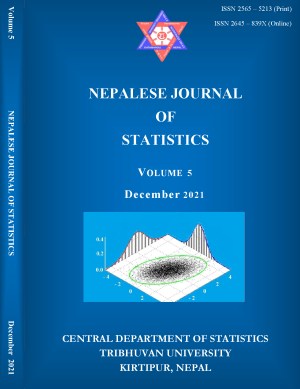Assessment of Factors Associated with Indoor Air Pollution using Multinomial Logistic Regression: A Case Study of Barbardiya Municipality
DOI:
https://doi.org/10.3126/njs.v5i1.41226Keywords:
Indoor air pollution, multinomial logistic regression, odds ratio, population proportion ot size sampling, socio-economic variablesAbstract
Background: Indoor air pollution (IAP) is a major risk factor of acute respiratory infections (ARIs). Most of the households in rural Nepal still depend upon biomass fuel. Associations between socio-economic variables and IAP can be captured using different statistical models.
Objectives: The objective of the study was to determine association between IAP condition with socio-economic and demographic factors across the households of Barbardiya municipality, Bardiya, Nepal.
Material and Methods: Based upon the primary data of 370 households, association between IAP condition (high, moderate, low) with socio-economic and demographic variables (Ethnicity, education level, income, family size, land size etc.) were established using multinomial logistic regression model.
Results: Descriptive analysis revealed that almost 21% of the households were exposed to high (sever) IAP, 41% to low and rest (38%) were moderate. Fitted model predicted that the odds ratio of socio-economic variables like Ethnicity: Tharu community relative to Bhramin/Chhetri community was 2.5 (95% Confidence Interval (CI): 1.08 -5.78), household head’s education level: illiterate relative to literate was 8.21 (95% CI: 3.30-59.54), family’s monthly income: ≤ NRs 30000 relative to > NRs 30000 was 2.38 (95% CI: 1.10-5.16) considering high with respect to low IAP.
Conclusion: Households of Tharu community have significant proportion of high and moderate levels of IAP (or household air pollution) compared to other ethnic groups. Literacy status of household head also have an association with IAP along with several other factors. Various methods can be adopted to reduce IAP which was recommended to concerned authorities.
Downloads
Downloads
Published
How to Cite
Issue
Section
License
© Central Department of Statistics, Tribhuvan University, Kirtipur, Kathmandu, Nepal
The author of article must sign the copyright permission or the author must assign copyright to the Central Department of Statistics, Tribhuvan University prior to publication.
All rights reserved.




